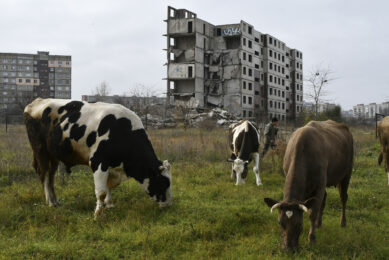DuPont expects seed market share to increase

DuPont Co. expects an increase in the market share for corn and soybean seeds in North America for 2011. This will be the third year in a row, the head of the company’s seed division said.
The gains by Pioneer Hi-Bred, the Iowa-based DuPont subsidiary, would continue the company’s momentum as it battles with rival Monsanto Co., which took a big chunk of Pioneer’s market share last decade. Pioneer had lost share for three straight years before its market share stabilized in 2008. It increased its corn market share by two percentage points in 2009 and three percentage points in 2010, Pioneer President Paul Schickler said in an interview.
"We’ll have again this year not only the share gains, but price increases as well," Schickler said.
The company said it had 35% market share in corn last year and 31% in soybeans.
Schickler wouldn’t quantify the share increases for 2011. Pioneer has gained market share as Monsanto has grappled with a farmer backlash against pricing of its premium corn seed, among other issues.
The next battleground for the seed industry is "refuge-in-a-bag" corn, which allows farmers to more easily comply with federal guidelines mandating each field of genetically modified seed also include a buffer, or "refuge" on non-biotech seed. The product includes non-biotech seeds in the bag, allowing farmers to plant buffer more efficiently. Having a buffer is intended to prevent pests from developing resistance to genetically modified traits.
Pioneer was first on the market with a refuge-in-a-bag product this year, but will be followed by Monsanto and other companies next year. Although Monsanto and some seed dealers have criticized Pioneer’s offering this year as not being comprehensive, Schickler said it will be planted on more than 3 million acres this year, making it a big success. The company is rolling out a more comprehensive refuge-in-a-bag product next year, he added.
"We are the industry leader in this, and it has been a challenge to convince the public of this, even though we’ve convinced our customers," Schickler said.
It isn’t yet clear how many acres of corn will be planted this year, Schickler said. But weather problems across the U.S. will make it a "challenge" for farmers to plant the 92 million acres the U.S. Department of Agriculture has projected.











